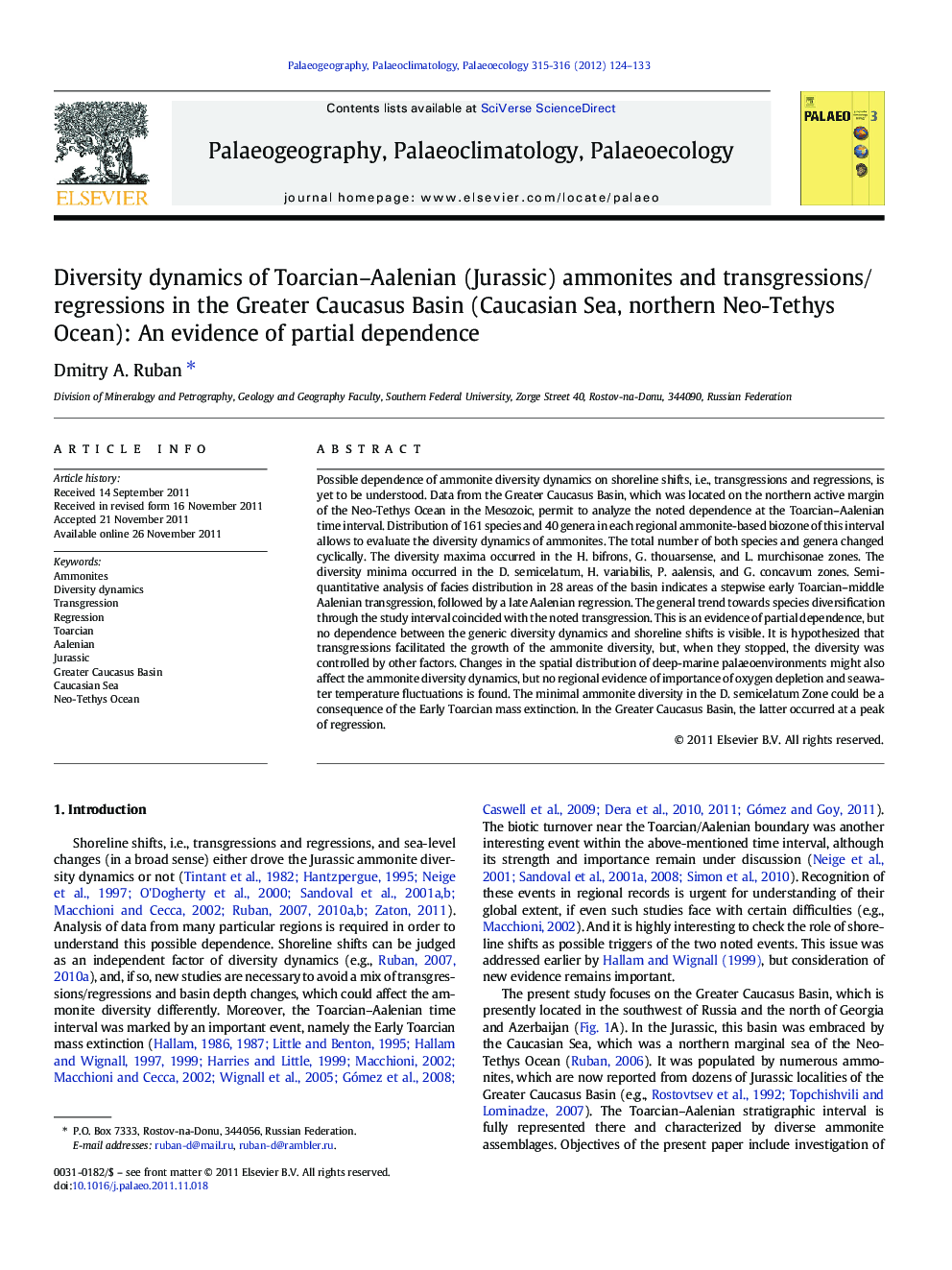| کد مقاله | کد نشریه | سال انتشار | مقاله انگلیسی | نسخه تمام متن |
|---|---|---|---|---|
| 4467053 | 1622241 | 2012 | 10 صفحه PDF | دانلود رایگان |

Possible dependence of ammonite diversity dynamics on shoreline shifts, i.e., transgressions and regressions, is yet to be understood. Data from the Greater Caucasus Basin, which was located on the northern active margin of the Neo-Tethys Ocean in the Mesozoic, permit to analyze the noted dependence at the Toarcian–Aalenian time interval. Distribution of 161 species and 40 genera in each regional ammonite-based biozone of this interval allows to evaluate the diversity dynamics of ammonites. The total number of both species and genera changed cyclically. The diversity maxima occurred in the H. bifrons, G. thouarsense, and L. murchisonae zones. The diversity minima occurred in the D. semicelatum, H. variabilis, P. aalensis, and G. concavum zones. Semi-quantitative analysis of facies distribution in 28 areas of the basin indicates a stepwise early Toarcian–middle Aalenian transgression, followed by a late Aalenian regression. The general trend towards species diversification through the study interval coincided with the noted transgression. This is an evidence of partial dependence, but no dependence between the generic diversity dynamics and shoreline shifts is visible. It is hypothesized that transgressions facilitated the growth of the ammonite diversity, but, when they stopped, the diversity was controlled by other factors. Changes in the spatial distribution of deep-marine palaeoenvironments might also affect the ammonite diversity dynamics, but no regional evidence of importance of oxygen depletion and seawater temperature fluctuations is found. The minimal ammonite diversity in the D. semicelatum Zone could be a consequence of the Early Toarcian mass extinction. In the Greater Caucasus Basin, the latter occurred at a peak of regression.
Figure optionsDownload high-quality image (126 K)Download as PowerPoint slideHighlights
► Regional ammonite diversity changed cyclically during the Toarcian–Aalenian.
► Transgression facilitated an increase in the total number of species.
► Early Toarcian mass extinction affected ammonites in the Greater Caucasus Basin.
Journal: Palaeogeography, Palaeoclimatology, Palaeoecology - Volumes 315–316, 15 January 2012, Pages 124–133